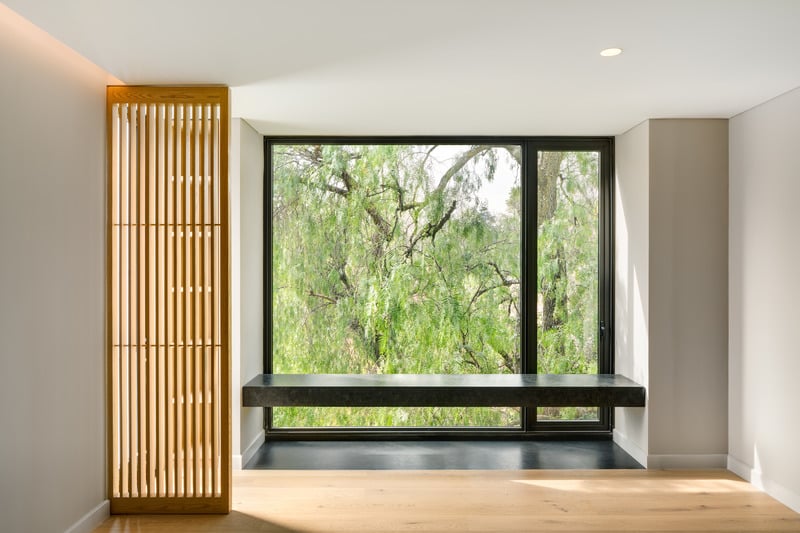 The house by HEMAA Architects is located on a corner in the West side of Mexico City. It responds to three key premises: the preservation of previously existing trees as core elements of the project, the isolation from the street’s inherent transit, and the incorporation of an ample architectural program on a plot with limited dimensions.
The house by HEMAA Architects is located on a corner in the West side of Mexico City. It responds to three key premises: the preservation of previously existing trees as core elements of the project, the isolation from the street’s inherent transit, and the incorporation of an ample architectural program on a plot with limited dimensions.
Within its clearly urban environment, the sense of privacy is successfully achieved thanks to a monolithic and nearly blind façade which extends out the street, only interrupted by some openings at specific modules for lighting and ventilation purposes, which respond to the interior’s architectural design plan. In contrast, the South façade is more open, offering a broad view of the garden and its long-standing trees, while it bathes the interior of the house in light and provides natural landscapes to each and every habitable area.
 The house responds to a structural order consisting of base, body, and capital. Its exterior evinces such order through the use of white exposed concrete structural elements that crown the openings, work as enclosures, and clearly define the house’s levels. The limestone articulation covering the façade is the result of its distribution, which regulates the architectural volume and, in itself, responds to a canvas that adds rhythm within the façade’s assemblage.
The house responds to a structural order consisting of base, body, and capital. Its exterior evinces such order through the use of white exposed concrete structural elements that crown the openings, work as enclosures, and clearly define the house’s levels. The limestone articulation covering the façade is the result of its distribution, which regulates the architectural volume and, in itself, responds to a canvas that adds rhythm within the façade’s assemblage.
A transition threshold that works as a hinge-connection between the exterior and the interior leads to the main entrance situated on one of the sides of the construction. The central space consisting of living room, dining room, and kitchen opens up to a full view of the garden and its impressive visual core element: a three-trunk Peruvian Peppertree, which proudly steals the spotlight as this land’s five-decade guardian.
Photo credit: Rafael Gamo













